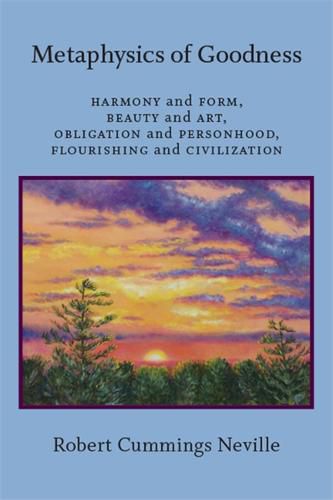Readings Newsletter
Become a Readings Member to make your shopping experience even easier.
Sign in or sign up for free!
You’re not far away from qualifying for FREE standard shipping within Australia
You’ve qualified for FREE standard shipping within Australia
The cart is loading…






In Metaphysics of Goodness, Robert Cummings Neville extends Alfred North Whitehead’s project of cultural studies, which was based on a new metaphysics that Whitehead developed in Adventures of Ideas. Neville’s focus is value or goodness in many modes. The metaphysics treated in this book derive from the Platonic and Confucian traditions, with significant modifications of Whitehead, Peirce, Dewey, Confucius, Xunzi, and Zhou Dunyi. Part one develops a theory of form based on a metaphysics of harmony. Part two elaborates a theory of art based on a metaphysics of beauty. Part three sketches a theory of personhood based on a metaphysics of obligation. Part four discusses civilization in a systematic way based on a metaphysics of flourishing. Throughout the book, Neville elaborates a theory of interpretation that is inspired by Peirce, Dewey, and Xunzi but is not limited to their ideas. While the reasoning of the book is concise, it employs methodologies from many kinds of philosophy, art criticism, ethics, and cultural studies, and sees philosophy as needing to learn from all these disciplines.
$9.00 standard shipping within Australia
FREE standard shipping within Australia for orders over $100.00
Express & International shipping calculated at checkout
In Metaphysics of Goodness, Robert Cummings Neville extends Alfred North Whitehead’s project of cultural studies, which was based on a new metaphysics that Whitehead developed in Adventures of Ideas. Neville’s focus is value or goodness in many modes. The metaphysics treated in this book derive from the Platonic and Confucian traditions, with significant modifications of Whitehead, Peirce, Dewey, Confucius, Xunzi, and Zhou Dunyi. Part one develops a theory of form based on a metaphysics of harmony. Part two elaborates a theory of art based on a metaphysics of beauty. Part three sketches a theory of personhood based on a metaphysics of obligation. Part four discusses civilization in a systematic way based on a metaphysics of flourishing. Throughout the book, Neville elaborates a theory of interpretation that is inspired by Peirce, Dewey, and Xunzi but is not limited to their ideas. While the reasoning of the book is concise, it employs methodologies from many kinds of philosophy, art criticism, ethics, and cultural studies, and sees philosophy as needing to learn from all these disciplines.